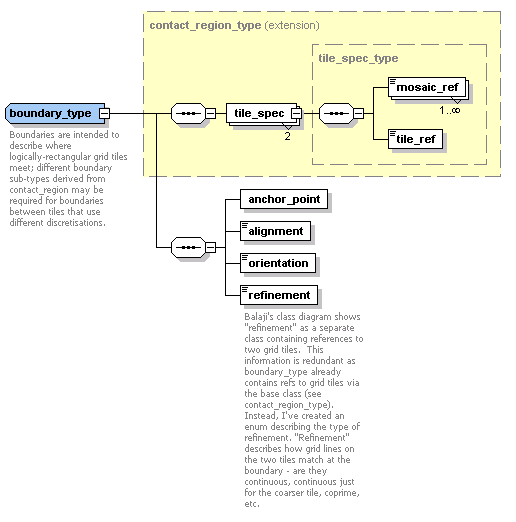Difference between revisions of "GENIE Gridspec Diagrams Boundary"
Jump to navigation
Jump to search
Genie-user (talk | contribs) m |
Genie-user (talk | contribs) m |
||
| Line 1: | Line 1: | ||
| − | Boundary [[ | + | Boundary [[GENIE_Gridspec_Diagrams_ContactRegion|contact regions]] occur where two grid [[GENIE_Gridspec_Diagrams_Tile|tiles]] meet, but do not overlap. The boundary type below is suitable for grid tiles with logically-rectangular discretisations; it consists of: |
* An anchor point - a point common to both grid tiles; | * An anchor point - a point common to both grid tiles; | ||
Latest revision as of 17:56, 26 February 2007
Boundary contact regions occur where two grid tiles meet, but do not overlap. The boundary type below is suitable for grid tiles with logically-rectangular discretisations; it consists of:
- An anchor point - a point common to both grid tiles;
- An "alignment" flag, used to indicate whether the anchor point is shared in index space by both tiles;
- An orientation, which can be used to indicate how vector fields are transformed as they cross the boundary - for instance, whether latitudes on the first grid tile map to latitudes or longitudes on the second grid tile;
- A refinement, which describes whether grid lines (cell edges) are continuous between tiles, just continuous for the coarser tile, or coprime.
Note: the gridspec overview contains introductory and background information on the gridspec; more detailed information can be found in Balaji's gridspec document on the Earth System Curator website.
